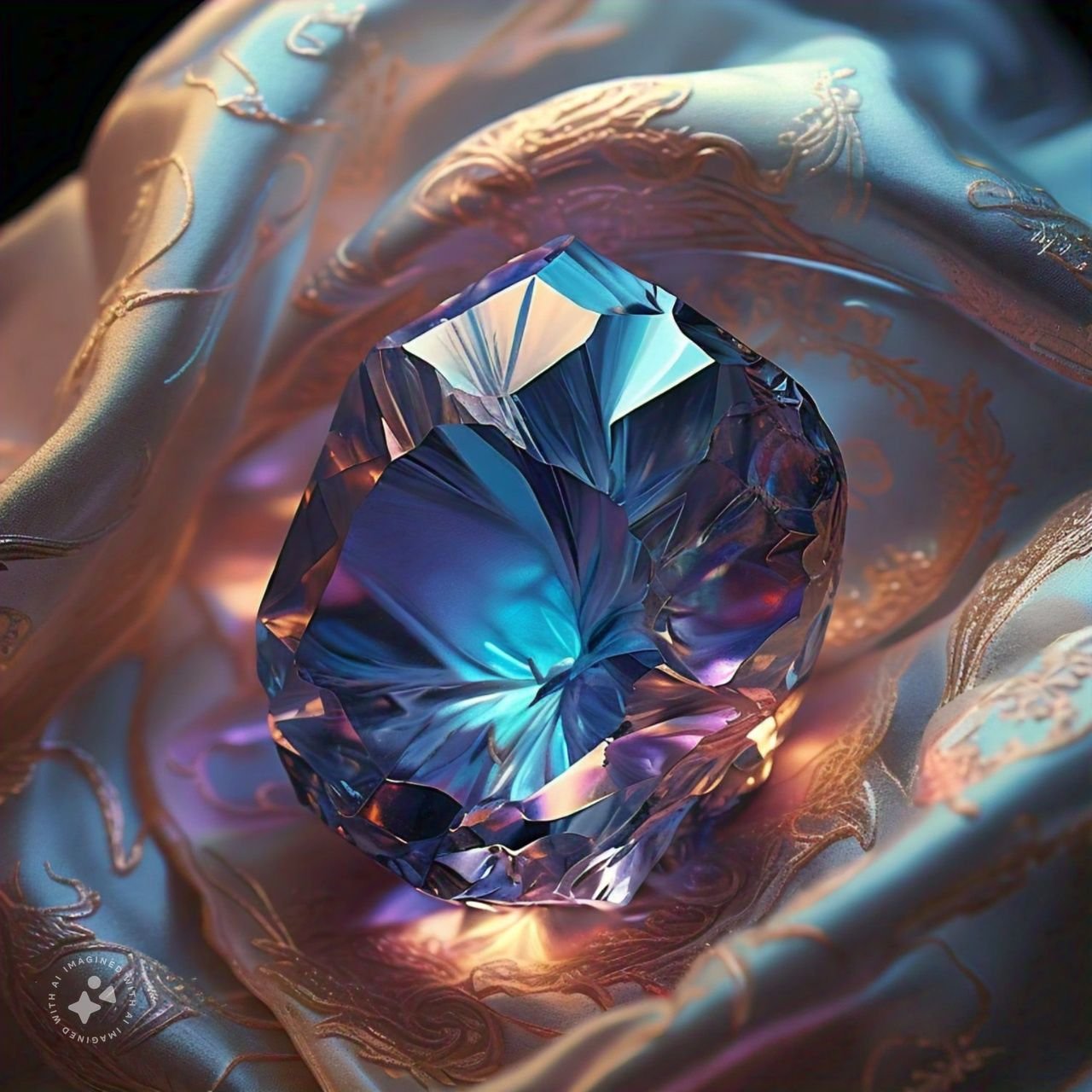Silk Gemstone Jewelry: Timeless Elegance and Modern Trends

Introduction
Silk gemstone jewelry blends art and nature. Silk and jewels make beautiful, culturally and historically significant jewelry. Silk’s softness and diamonds’ multidimensional sparkle provide diverse designs for varied tastes. Ancient nobility produced diamond-silk jewelry. Silk was valued for its luster, durability, and softness. Jewels were rare, beautiful, and mysterious. Both components made gemstone-powered jewelry that symbolized riches and majesty.
Jewelry has improved without losing appeal. Modern designers make conventional, baroque, minimalist, and avant-garde products using diamonds and silk. Silk may be crocheted and twisted into jewelry.
Historical Significance and Cultural Impact
Silk-gemstone jewelry. Silk-based ancient Chinese economy and imperial emblem. Cultures received gems via the Silk Road. Jade, pearls, and other valuable stones were employed by famous Chinese silk thread weavers. Indian jewelry is millennia old. India creates silk and jewelry. Ruby, emerald, and sapphire-embroidered silk jewelry from Rajasthan and Gujarat.
Religious ceremonies used this jewelry. Cultural importance of jewelry. Different civilizations utilize these items to show familial continuity. Fine craftsmanship and high-quality materials make jewelry attractive.
Modern Trends in Silk Gemstone Jewelry
Jewelry is trendy again because of its unique combination of traditional and modern forms. Sustainable, ethical materials are popular. As ethical and environmental consciousness rises, jewelers employ eco-friendly silk and conflict-free diamonds. Jewelry appeals to conscientious buyers.
Another trend is jewelry manufacturing-challenging design. Wearable art is being created using silk and jewels. Making exquisite silk strand settings helps jewels float. Others build beautiful silk gem boxes using 3D printing.
Silk’s flexibility permits endless patterns. Simple silk patterns with solitaire diamonds are appealing. For drama, jewel-studded showpiece pieces with vibrant silk threads are ideal. Jewelry works regularly and at special events.
Crafting Techniques and Materials
Jewelry is made using ancient and contemporary methods. High-quality diamonds and silk are picked first. Silk should be attractive and durable. Artisans like smooth, lustrous Mulberry silk. Silk and pattern are enhanced by gemstone color, clarity, and cut. Knotted jewelry is traditional. Knotting silk secures gems. This method generates elaborate, durable jewelry. To hold gems, silk knots must be uniformly spaced and exact.
Weaving and knotting jewelry is prevalent. Interlaced silk strands form elaborate weaving patterns. Because weaving patterns provide different outputs, this technique is adjustable. For sparkle, some artists weave metallic threads into jewelry. jewelry is laser-cut and 3D-printed. Laser cutting makes elaborate silk designs that are impossible to copy. Complex frameworks may contain diamonds using 3D printing. These technologies streamline production and improve design, saving time and money.
The Role of Silk in Jewelry Design
Silk affects jewelry aesthetics. Natural luster and silky texture accentuate diamonds’ brilliant hues and facets. Silk may be used to construct delicate or dramatic designs due to its elasticity. Silk makes jewelry opulent and comfy. Jewelry makers use this versatility to produce different effects. Rope-twisted or braided silk can be jeweled.
Elegant silk lace may be used for gem setting. Silk manipulation makes unusual gemstone jewelry. Cultural relevance enriches jewelry. Silk depicts Chinese wealth. Silk symbolizes purity and auspiciousness in Indian bridal gowns and jewelry. Jewelry cultural, symbolic, and aesthetic value.
Gemstone Selection and Pairing
Jewelry requires careful placement and choosing. Color, clarity, cut, symbolism, and characteristics determine gemstone choices. Gemstones may provoke varied emotions and visual effects, making selection vital. Color determines gemstone choice. Silk’s sheen and jewels’ brilliant colors make beautiful jewelry. Deep blue sapphires on white silk and flaming red rubies on black silk are lovely. Jewelry can be colored for special events.
Clarity and cut matter in gemstones. High-quality diamonds cut precisely may make jewelry more beautiful. Cut and light impact gem shine. The cut and silk setting may create a balanced jewelry item. Stones are chosen for their beauty, symbolism, and purported powers. Gemstones symbolize love, luck, protection, and healing. Emerald symbolizes rejuvenation, while amethyst calms. Jewelry with significance may be more than a pretty accent.
The Future of Silk Gemstone Jewelry
Jewelry will thrive due to rising interest in ethically produced materials, creative design, and technology. Consumers’ ethical and environmental concerns may make sustainable jewelry more trendy. Designers and craftspeople might try these jewelry ideas. Growth is possible for silk and jewelry. Sustainable silk comes from organic cultivation and non-toxic dyeing. Gemstone mining and treatment ethics limit environmental damage and ensure fair labor. Sustainable jewelry looks better and protects natural resources and producing communities.
Jewelry may benefit from new design and technology. Laser cutting, 3D printing, and other technologies enable elaborate patterns. These technologies improve accuracy and efficiency, making jewelry cheaper and better. Jewelry is more personalized using advanced technologies. Consumers today want things that express their personality. This may enable more personalized jewelry creation. Costume designers may let buyers choose diamonds, silk hues, and designs.
The Craftsmanship Behind Silk Jewelry
Jewelry requires skill. Silk threads and gems are utilized for quality. We choose silk threads for their strength, luster, and flexibility, and we select gemstones for their color, clarity, and cut. Artisans use generations-old methods to weave silk strands into exquisite patterns. It takes attention and accuracy to put and secure threads in weaving. After the silk base, gems are carefully put.
Small silk holes or delicate prongs and settings hold the diamonds. The jewelry is beautiful and durable. Silk provides comfort and flexibility, while gems provide sparkle. The artisan’s skill and creativity give each piece a story via design and symbolism.
Cultural Significance and Symbolism
Jewelry holds deep cultural significance in many parts of the world. In China, people associate silk with prosperity, elegance, and refinement. Jade, often used in Chinese jewelry, is considered a symbol of purity and moral integrity. Jewelry that combines silk and jade brings harmony and balance to the wearer.
In India, people often wear jewelry during weddings and other important ceremonies. Silk threads and gemstones, with their vibrant colors, attract good luck and repel evil spirits. Gold, often used in Indian jewelry, represents wealth and divine energy. The intricate designs and craftsmanship of Indian jewelry are a testament to the country’s rich cultural heritage and artistic traditions.
In the Middle East, jewelry is a symbol of status and luxury. Ancient Mesopotamia saw people trading and highly valuing silk and gemstones in jewelry. Today, jewelry continues to be a popular choice for special occasions, with designs often featuring intricate patterns and vibrant colors that reflect the region’s artistic heritage.
Modern Trends in Silk Gemstone Jewelry
Historic jewelry has developed with fashion. Modern designers use technology and materials to make appealing goods. Sustainable jewelry is trending. Designers want sustainable silk and diamonds as buyers grow more eco- and socially conscientious. Green gemstone mining and processing and organic silk. Elegant jewelry designers promote ethical fashion with sustainability.
Jewelry made with current technologies is another trend. These technologies let designers innovate using conventional skills. Simply jewelry is very trendy. Instead of ornate and colorful, modern designs are clean and simple.
This style is like simple jewelry. Modern silk strands with solitary stones or clusters are popular. Another trend is customized jewelry. Customers want custom parts. Choose silk, expensive gems, and initials or symbols. jewelry is ideal for gifting and special occasions.
The Future of Gemstone Jewelry
Silk and gemstone fashion accessories. Eco-friendly and ethical materials inspired this unique jewelry design. Brilliant, smooth diamonds are culturally significant. Mindful customers choose handcrafted, ethical jewelry. For beauty and durability, jewelry designers might blend silk with jewels.
Technology alters silk gemstone jewelry. Silk and gemstone processing advances enable designers to experiment with colors, textures, and shapes. Jewelry made of silk and diamonds. As the industry increases, silk gemstone jewelry will appeal to a worldwide audience that values elegance, sustainability, beauty, and ethics. This painting technique honors tradition and supports originality.
How to Care for Gemstone Jewelry
Jewelry requires maintenance to look good and last. Handle delicate jewels and silk carefully. Keep jewelry cool, dry, and out of direct sunlight. Sunlight and humidity damage silk. To avoid dust and damage, store valuables in a soft bag or jewelry box.
Avoid water, perfumes, and chemicals when wearing jewelry. Although chemicals may destroy gemstones and silk, water can discolor and degrade silk. Apply jewelry after makeup and perfume to reduce exposure.
Jewelry needs delicate cleaning. Avoid harming silk and diamonds by cleaning with a soft, wet towel. Deep clean with mild soap, clean water, and a soft cloth. Periodically check jewelry for loose threads and settings. Fix loose or broken jewelry to prevent additional harm.
Conclusion
Chic, traditional jewelry. Its heritage, cultural importance, and unique style make it a cherished accessory. Gorgeous silk and diamonds make beautiful and meaningful items.Jewelry, whether apparent or subtle, compliments every attire.
Silk gemstone jewelry will stay popular with individuals seeking distinctive and meaningful accessories as trends shift. Responsible materials, creative design, and technology will sustain this jewelry style. Beautiful, flexible, and culturally appropriate jewelry exhibits nature’s richness and artistry.










